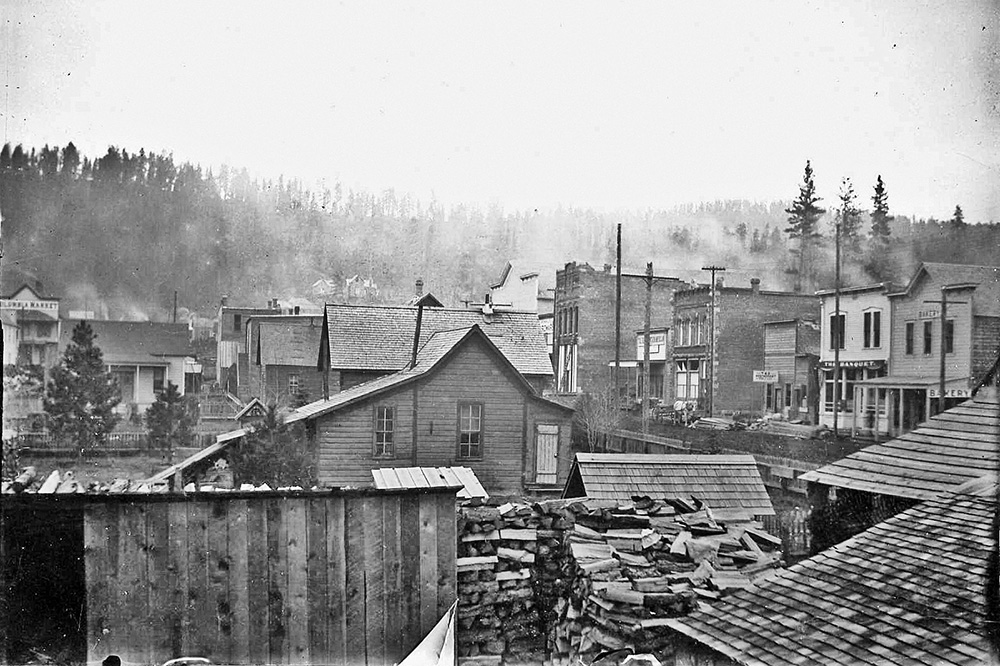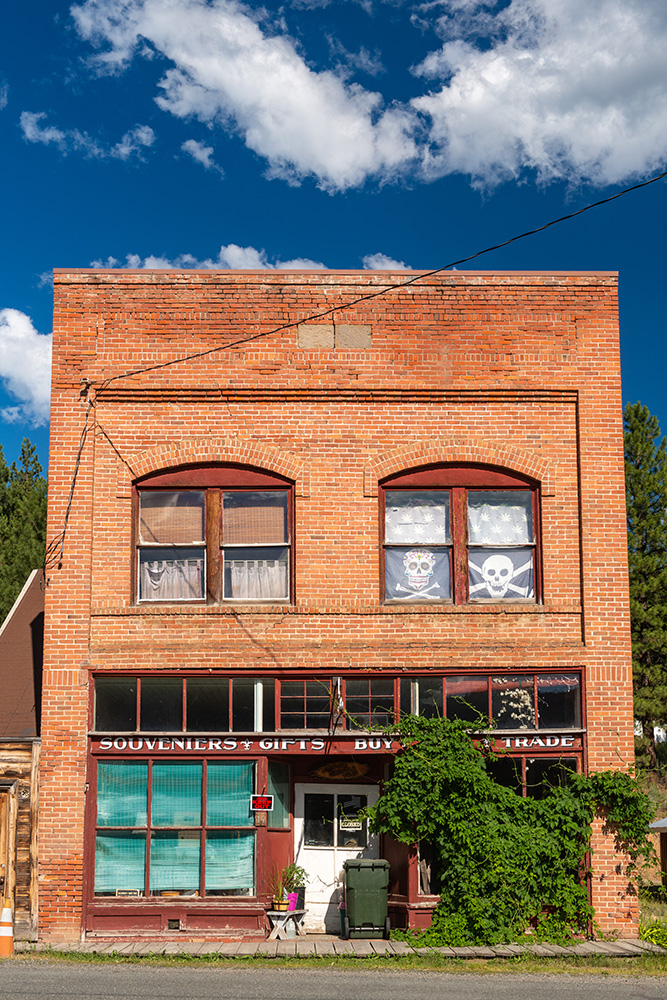
 A circa 1900 view of the north end of Mill Street in Sumpter. (Courtesy of Baker County Library District) Enlarge Image
A circa 1900 view of the north end of Mill Street in Sumpter. (Courtesy of Baker County Library District) Enlarge Image
According to local legend, Sumpter’s early settlers found a large, round stone which reminded them of a cannonball and, inexplicably, Fort Sumter in South Carolina. Regardless of its origins, Sumpter with a “p” was platted in 1898 and became a gold mining boomtown in less than a decade. In the early 1900s and for many years after, the narrow-gauge Sumpter Valley Railway moved people and goods from Baker City through Sumpter and on to Prairie City.
After the railroad arrived, the city expanded nearby deep shaft gold mines into a combined 12 miles of tunnels. The population grew to more than 2,000 people almost overnight. Sumpter had become a truly modern town, with churches, saloons, a brewery, sidewalks, three newspapers, and an opera house. It even had electric lighting. By this point, almost $9 million in gold had been drawn from the area’s 35 mines. Sumpter was known locally and promoted nationally for its central role in the mining region.
 One of many old buildings in Sumpter. (Oregon State Archives, 2019) Get a high resolution copy of this image in the Oregon Scenic Images Collection.
One of many old buildings in Sumpter. (Oregon State Archives, 2019) Get a high resolution copy of this image in the Oregon Scenic Images Collection.
Tragedy struck in 1917. As the mines were playing out, the city witnessed a devastating fire. The flames likely began in the Capitol Hotel and burned nearly 100 buildings over 12 town blocks. Dynamite was needed to put out the fire and only a few fireproof buildings remained, including the brick vault of the local bank. Since the mines were already going bust, few people had any incentive to stay and rebuild. Most former residents simply moved on.
Sumpter’s gold dredges, however, continued on for decades. Several of these mining boats began operating in the 1910s. The last and largest still survives as a historic tourism destination. The dredge was a 72-bucket monster that processed nine cubic feet of material per minute. The dredge filtered out the gold and deposited gravel from a 96-foot conveyor, leaving neat piles of tailings up and down the valley. It operated 24 hours a day from 1934 to 1954, only stopping on Christmas, the 4th of July, and for three years during World War II.
In all, the Sumpter dredge extracted some $4.5 million in gold from the valley and left a wake of devastation visible from space. With the creek unusable for farming or husbandry, the dredge and surrounding lands are now an Oregon state park. A few of Sumpter’s surviving structures remain and are now occupied by retail shops for tourists. Recently, six miles of the Sumpter Valley Railway (now Railroad) were repaired, and the line runs an excursion train between Sumpter and McEwen.
More Sumpter Photos
 Sumpter in ruins after a 1917 fire. (Courtesy of Baker County Library District)
Sumpter in ruins after a 1917 fire. (Courtesy of Baker County Library District)
Next: